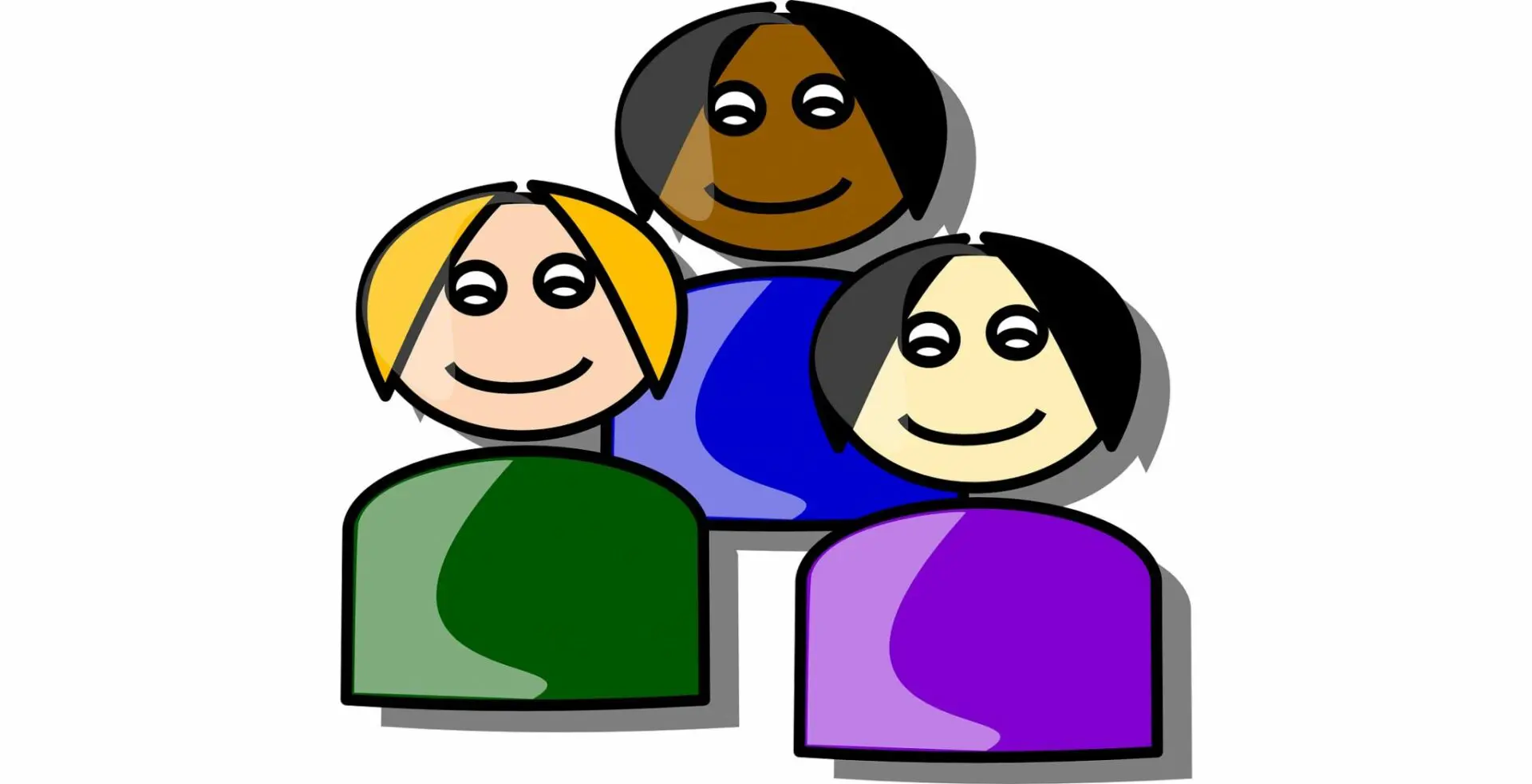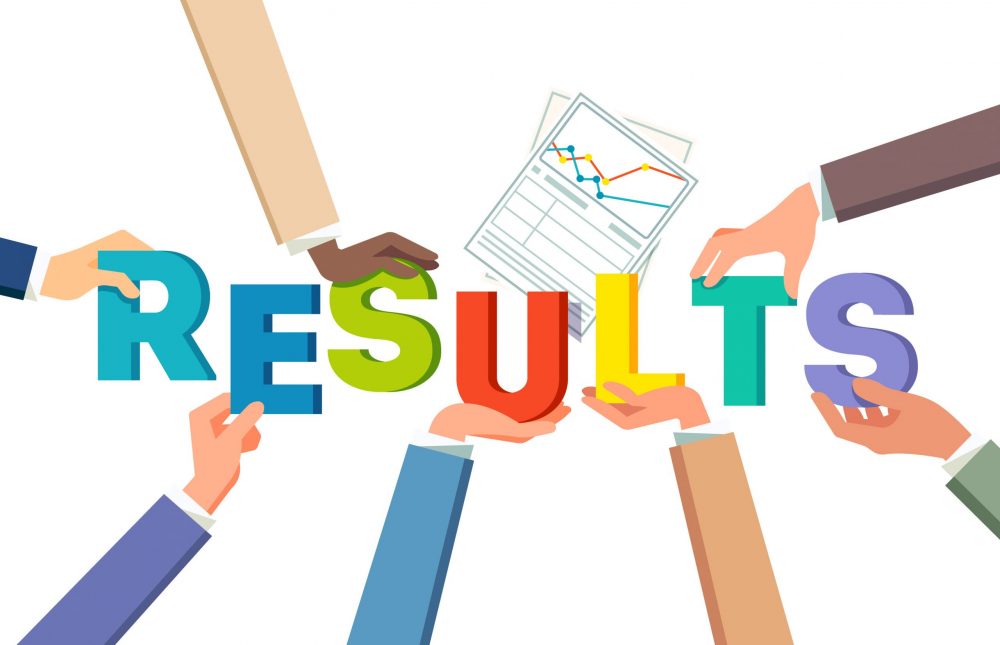
Race Actually Matters for Believers … Just Not the Way You Think
(We Are All Racists Now)
by Rev. Jacob Chulsung Kim, Ph.D.
It is likely that everyone who has given the matter any kind of serious thought has their own unique understanding of race in the U.S. This article will offer an explanation of race which attempts to include most (if not all) of those understandings and make tolerance possible again. Though it is actually a simpler task than it may seem, the goal is not to have consensus, but rather to provide a way to navigate the many racial situations encountered. This explanation will hopefully be helpful for those in the faith who struggle with such issues.
Many secular scholars will say that the current understanding of race started about 500 years ago when Europeans once again encountered people of different lands. That is, the understanding that race represents the differentiation of human beings according to some arbitrarily-determined physical characteristic was established to explain people of different color. Race based on color became a major concept through which “modern” Europeans tried to understand themselves in contrast with colored people for a variety of reasons. Many of these reasons were negative and exploitative in nature. This understanding that “race is color” has become the dominant understanding in America today. American and European history have been filled with stories and events which revolve around the color of people’s skin. Most of these stories include colonialism, slavery, gross injustice and codified abuse and exploitation of fellow human beings; this history cannot be ignored or deemed irrelevant. Today the mistreatment and negative attitudes towards people of different skin color is referred to as racism.
It is easy to understand and agree that these events of racism are evil and un-Christ-like; people’s general sense of justice and awareness of hypocrisy (double standards) make it is easy to understand how terrible these phenomena often are. It is not just the treatment of people based on a single characteristic which is so terribly wrong, but also the accompanying assumption that one understands and knows all there is to know about one’s character, ability and potential. Because of American history, color is the characteristic which is used to determine race or to differentiate people from one another. However, it is possible to see and experience similar discriminatory phenomena with different characteristics, especially if one uses a different perspective.
One of the lesser known definitions of race can be found in Merriam-Webster, “a class or kind of people unified by shared interests, habits, or characteristics.” Michael Omi and Howard Winant have a variation of this: race is “a concept which signifies and symbolizes social conflicts and interests by referring to different types of human bodies.” (Michael Omi and Howard Winant, Racial Formation in the United States: from the 1960’s to the 1990’s, 2nd ed. New York: Routledge, 54) Both definitions hint at the possibility that people can be discriminatory or racist towards others on issues other than one’s skin color; that is, race can be more than just color categories. I submit that the number of racial categories and ways through which people may be racist are infinite because any of our characteristics can be used to form a reference group. Race can then be understood and simplified as a categorization or generalization (racialization) of a group of people based on a single identifiable characteristic. A characteristic can be any adjective or qualifier which can be applied to a person; one of which can be color; e.g. yellow man. Racism, then, is the pretense of knowing someone based on that person’s signified racial category, expecting that person to act in a certain way because of that category and then treating that person in a certain way, again, based on that categorization. This proposed understanding of race is helpful and flexible enough to explain why there are so many different scholarly race theories, not to mention theories outside of the university setting. It also explains why all are flawed with a persistent shortcoming; race theories only seem to work for some people, some of the time, in some places.
Although current discourse will frequently use the word “race” in a potentially volatile and negative manner, according to our definition, any generalization can be a racial marker. A narrow and hypocritical way to understand race is to ask which race, racialization (race making) or racism is bad. Pursuing that line of thinking generally results in anger and violence, not a resolution of constructed problems. In other words, while one may research how a particular race was affected by racial attitudes, the conclusion often is racializing others for a never ending, ever escalating dynamic of violence.
Instead, we should try to understand that generalizations of people go far beyond a person’s skin color; e.g. I racialize/categorize my children as my children; I expect them to act in a certain manner and I treat them in the way I do because of their categorization. By definition I am a racist, however, since that concept has been taught in current discourse as a negative one, society uses a different expression for what is essentially the same behavior; e.g. “parenting.” In other words, in popular discourse, racism or acting on generalizations today is only selectively evil. When we talk generally about mothers, fathers, teachers, libertarians, Christians, politicians, foreigners, or consumers, we are generalizing and being racist at the same time. Again, it is not typical (yet) to call someone a racist for talking about mothers in general terms. Unfortunately, American society is trending in that direction.
Since racializations are generalizations, they are broad in their scope and generally break down with any attempt to add specific details on top of the initial categorization: for example, all Christians believe in adult baptism. Most people, most of the time, know that generalizations are only true for everyone in that category for one trait; beyond that single trait, there is difference and diversity. Various members of the same category may share numerous traits, but they will differ from each other in many more.
Consider also that talking about race is talking about individual identity; this makes race a personal and often sensitive issue. What most race theorists overlook in their zeal to empower or eradicate a specific racialization is that each individual is never just one racial category all of the time. Each individual has an uncountable number of racial markers which collectively make his or her identity; each of us are the sum total of all of our racializations which ensures that each of us are unique. This collection of racializations is continually changing; we are always adding to and discarding racial categories from our identity. Racial categories can include those we dislike as well as those we embrace; some categories have been around for a time while others have yet to be constructed. Which racial marker or racialization is perceived, invoked and used depends on the situation and who else is in the room. If I were to speak at a party at my church, depending on the person looking at me, I could be categorized as husband, father, brother, son, cousin, uncle, pastor, professor, old man, younger man, Korean, Asian, or American all at the same time. Which racialization is the important one might not be the best way to proceed from here.
In fact, to continue to discuss only one of the many racializations of any given person is to create a caricature of that person; one would simply exaggerate one aspect of that very complex person as if it was the only trait of any significance. When I come home after a long day away, my children do not say that their “yellow father” has come home; at home I am simply “dad.”
Those situations where everyone has the same racial marker, that common marker ceases to be a way to create the other; in other words, that particular racial category is not important because it cannot be used to create difference between two people. Trust me when I say that Asians living among Asians in Asia do not wonder why they are yellow or Asian. Instead other markers will rise in importance to serve as references to dictate and guide behavior. This is why tribal affiliation, geographical hometown or dialect is more prominent in so-called color homogenous societies. So, racial dynamics exist in color homogenous societies, only, those dynamics do not arise because of color difference.
At this point many who have been exposed to the current social and academic discourse may be thinking (if not screaming) that only those markers which are unchangeable (like skin color) can qualify as being a “true” racial marker. This is an arbitrarily narrow definition constructed to bring about very specific conclusions such as the need for social action, or worse, state regulations. Instead, I propose that the qualification for a racial marker to be a legitimate racial marker would be whether one could lose one’s life because of that marker. No matter how trivial and impermanent one might think a racial marker to be, if given the appropriate circumstances one can lose one’s life because of it, it can be a valid racial marker. Thus, clothing, paperwork and beliefs can be used as racial markers, as well. American soldiers fighting overseas are racialized by their uniform; people who want to kill Americans overseas would check passports; spies are killed for pretending to be someone they are not; and people are often killed for their faith. Again, color is not a universal and constant racial marker. Understood in this way, the exceptions to any racial marker do not need to be ignored for the sake of pushing an agenda.
Racialization happens all of the time and sometimes, the purpose is distasteful to most people; but then at other times the purpose and result of a racialization is desirable by most. Genocide would be an example of a negative application of racialization; “spouse” would be the most extreme positive application of racialization; in marriage we want to make sure we marry the right person because most people can only do this once. The right person is determined by the individual based on criteria with many arbitrarily important often unspoken characteristics.
The act of getting to know someone is learning what other racializations a person has beyond the superficially perceived categories; e.g. the question, “what kind of Asian are you?” This process of racialization discovery is like the Hollywood box of chocolates; one never knows what one will get. Sometimes the process of getting to know someone will affirm pre-conceived expectations. More often when someone breaks a racial expectation, the response can be either positive or negative depending on the people and topic discussed. The mere fact that people are surprised to learn something new about someone means that racialization had already taken place; someone is not who we expected based on one’s initial racialization; e.g. pro-football players do not generally retire to become neurosurgeons, like Myron Rolle. It is the surprise which often makes us interesting to others.
Generalizations are a kind of reference point from which we proceed away from large groups of people towards specificity and individuality; in other words, we move from broad generalization where everyone may appear similar at first, to the specific and unique individual where members of a group no longer “look alike.” Though many would regard this process as offensive, it is quite logical and often will follow predictable patterns. It is easy to imagine that at some point some scholar simply got tired of answering “what kind of Asian” s/he is over and over again and decided that it was offensive to ask for Asian-specificity and put it in a book. One wonders how people are supposed to get to know each other if asking about details are all racially offensive endeavors. I wonder how people would modify their unspoken, subjective generalizations if they were not allowed to ask questions about race.
Different people will value racial characteristics differently. It is more often the case that we love who we love not so much in spite of certain racializations but because of particular racializations. It may be that people who claim they cannot see race may sometimes mean that certain racial distinctions do not matter to them or that they are attracted to those very racializations which others might see as a reason to have distance; e.g. I don’t see color might actually mean that one is “attracted” to people of color.
One might attempt to maintain that certain racializations are productive while others are not; some racializations are acceptable and positive while others are unacceptable and hateful; thus, certain racializations with their associated behaviors must be criminalized or regulated. This would be another example of hypocrisy; hypocrisy as defined by double standards. When people believe that only certain racializations should be banned or regulated as examples of hate while fostering and subsidizing others, it is hypocrisy. Racialization is part of the human learning process; to pick and choose which categories are offensive according to personal opinion ignores how others may feel towards those same categories.
This is not to say that there are no bad racializations or that there are no unproductive behaviors associated and motivated by racialization; instead, the so-called bad racialization itself is not really a significant social issue. Racialization by itself is relatively insignificant, especially when compared with legislating morality based on a racialization. It is when subjective racializations, subjectively valued, become codified into law that serious problems arise. The legislation of morality based on a generalized category of race establishes one imagined understanding of a kind of person as the perfect representation of everyone else in that same racialization. This law making process never takes into account the individuals of any particular race and so becomes the breeding ground of unintended consequences and the basis of future racial complaints. The current war against drugs is a good example of this phenomenon.
Conversations and discussions using broad generalizations about colored people, the poor, the police, evangelicals, saved and unsaved, enable social movements and political activism; this is why “race making” is a very common phenomenon in America today. Since the “real” racial categories have been taught to everyone through education and the mass media and entertainment, people can freely racialize everything else and not be accused of being racist. People today strive to increase the list of endangered categorizations; the question is never whether the racialization is legitimate, rather one should wonder if the endeavor is helpful. Listing “real” race categories is what makes political sleight of hand possible. Not knowing that race a categorization allows politicians (yes, also a racialization) to ignore the complexity of any perceived problem, suggest simplistic solutions to help an imagined group of people and later explain why funding must be either maintained or increased. People hypocritically demonize racism by creating and employing another racialization, as if one racialization will be better than another. It is easy to understand how laws and regulations built on generalizations will necessarily have unintended victims and beneficiaries.
Racialization can also be used to codify and normalize certain patterns of discrimination. This occurs through the efforts and activities of special interest groups in politics. Special interest groups are really self-segregated racial groups; they are groups of people unified by a single characteristic for a common cause; they seek favor and privilege at the expense of everyone else. This is also how people who are usually understood as oppressed can become oppressors by being categorized in a different way.
With this understanding of race, the idea of privilege is put into a better perspective. It is not that there is only one important privilege (white) which is shared by everyone in that category; rather, each racialization has its own privilege. There are as many kinds of privilege as there are racializations; e.g. beauty, coordination, memorization, black, height, weight, grit are all privileges, too. No one has them all and it is likely that a person has at least one. So, when the University of Iowa recently signified “cognitive privilege,” I can agree that it exists, however, is it not really a significant a problem or issue in the sense some intend and in the way they want to politicize it. The movie Hidden Figures illustrates how legislated discrimination along one racialization can be overcome by shifting the focus on a different racialization inscribed on the same person. In the movie, society codified discrimination along the lines of color, but it did not have laws codified for mathematical ability; you might not like someone for being a colored woman, but you can love her as an incredible mathematician. This also hints that the cost of arbitrary discrimination is extremely high; so high, that if maintained, will eventually lead to failure. In other words, unpredictable individual human action can overcome legislated morality.
This simplified view of race opens up institutional racism for easy analysis as well: rules create institutional racism. Rules dictate which racializations have a better chance for success than others. Those who have the racialization which is required for specific tasks have advantages over those who do not. In other words, some people are better equipped to meet the challenges created by the rules themselves. Sports are an easy way to see the effect of rules on participants. The rules of basketball, for example, mean that people who are taller, faster and ambidextrous will have a higher likelihood of success than shorter, slower and left or right hand dominant people. One might imagine that having fewer rules (not more and better) would undermine the systems about which people often complain.
We could go on but what does all this mean for the faith-life of a Christian? Believers with faith must still live with race; in fact, simply referring to believers as believers is itself a racialization. Once we move away from contemporary racial rhetoric, race making is put into a better perspective. The racial phenomenon is part of the problem of sin. We are bound by time and space and so everything is a process and unfolding; e.g. learning the way is a process.
Ultimately, everyone will be judged by God, but not by arbitrary racializations. Rather we will be judged by whether we lived with Christ in our hearts as our Lord and Savior; we are justified by faith, not by arbitrary racial categories. Once in the eternal world, the world where there is no time, we will know each other fully and absolutely. It will be as if all of our racializations were known all at once; there will no longer be the need for racial discovery.
Until that day, however, we must live in time and space; this life tainted by sin must always move in the direction of the absolute truth of God from a position of ignorance; I like to call this growing in faith. With each step on the road of life, we increase our knowledge and understanding of the Word of God which motivates us to strive to become more Christ-like in our everyday lives. Another way of expressing this might be that each of our individual racial categories must be brought under the authority of God through our ever maturing understanding of truth; e.g. Christian professor. This list of racializations is endless; everyone always has room for growth. In order to become more Christ-like, believers must be able to racialize and discriminate well; that sounds odd, I know. But by an ever growing faith, we learn to make better distinctions between good and evil, believer and non-believer, beneficial and unbeneficial, truth and lie; everything is subject to change except for the Word of God.
Believers still must continue to live in a racialized world, where consensus on anything is essentially impossible; this includes pastoral approaches. The paths believers take to glorify God with their lives will be diverse. Decisions and plans are made with each person’s own perception of the world using their current understanding of race. As long as we all remember that categories are dynamic and intimately personal, we may make better choices which will save time and energy. In other words, we can focus more on improving our relationship with God and focus less on how the rest of the world may upset us by its choices. Our course of action and temporal goals may always serve the ultimate goal of glorifying God. Let us all remain focused on the eternal prize and always lead by example giving glory to God at all times in peace and love.

Articles posted on LCI represent a broad range of views from authors who identify as both Christian and libertarian. Of course, not everyone will agree with every article, and not every article represents an official position from LCI. Please direct any inquiries regarding the specifics of the article to the author.
Did you read this in a non-English version? We would be grateful for your feedback on our auto-translation software.
), //libertarianchristians.com/wp-content/plugins/smartquizbuilder/includes/images/template6-latest.jpeg))

), https://libertarianchristians.com/wp-content/plugins/smartquizbuilder/includes/images/template6-latest.jpeg))








































), https://libertarianchristians.com/wp-content/plugins/smartquizbuilder/includes/images/template6-latest.jpeg))
), https://libertarianchristians.com/wp-content/plugins/smartquizbuilder/includes/images/template6-latest.jpeg))
), https://libertarianchristians.com/wp-content/plugins/smartquizbuilder/includes/images/template6-latest.jpeg))





*by signing up, you also agree to get weekly updates to our newsletter
Sign up and receive updates any day we publish a new article or podcast episode!